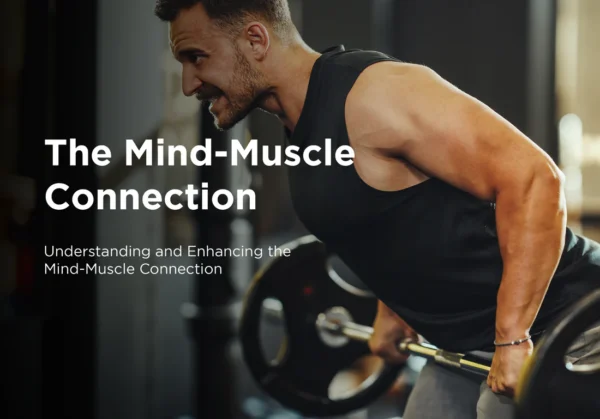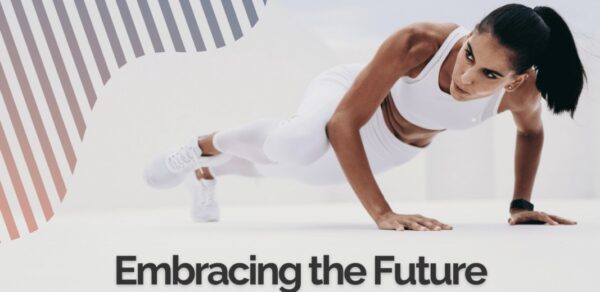
Set Goals
Introduction
As December winds down, it’s the perfect time to reflect on the past year and set goals for the year ahead. A fresh start in January begins with intentional planning in December. This blog explores how you can set achievable health goals and build a foundation for success with the Optimized Humans App.
Why Goal Setting Matters
Goals provide direction and motivation, especially during transitions. Whether your focus is weight loss, muscle gain, or improved mental well-being, starting with clear objectives ensures you stay consistent.
Steps to Set and Achieve Your Health Goals
- Reflect on 2024: Review what worked and what didn’t in your fitness and wellness journey.
- Set SMART Goals: Make your goals Specific, Measurable, Achievable, Relevant, and Time-bound.
- Create a Plan: Break down your goals into smaller, actionable steps.
- Track Progress: Use the Optimized Humans App to monitor workouts, meals, and progress.
Closing Thoughts
Your health goals are within reach when you approach them with clarity and the right tools. Let December be the springboard for an empowered and healthier 2025.
LETS GET FIT TOGETHER: Begin your journey to optimal health with Optimized Humans. Subscribe today and use code NEWYEARFIT25 for an exclusive discount!
Introduction
For individuals managing diabetes, the holiday season can be a tricky time. With sweet treats, family feasts, and festive drinks around every corner, it’s easy to feel overwhelmed. This blog shares practical strategies to enjoy the holidays while keeping blood sugar levels in check.
The Holiday Challenge for Diabetes Management
The abundance of high-carb and high-sugar foods during the holidays can lead to blood sugar spikes, making it harder to manage diabetes. However, with a bit of planning and mindfulness, you can indulge while staying on track with your health goals.
Tips for Managing Diabetes During the Holidays
- Plan Your Meals: Stick to your meal plan as closely as possible. If you’re attending a party, have a balanced snack beforehand.
- Portion Control: Savor small portions of your favorite holiday dishes instead of overloading your plate.
- Stay Hydrated: Drinking water can help stabilize blood sugar levels and curb overeating.
- Monitor Blood Sugar: Keep track of your levels more frequently during this period to make necessary adjustments.
Closing Thoughts
The holidays should be a time of joy and connection, not stress about your health. With the right strategies, you can navigate the season confidently while keeping your diabetes well-managed.
LETS GET HEALTHY TOGETHER: Join Optimized Humans to access tailored meal plans and fitness routines that support your health goals. Use code NEWYEARS25 for a discount on your subscription.

Let’s face it embarking on a “diet” (a word I hate using because of the stigma, I prefer clean or healthy meal plan/planning) journey often means paying close attention to macronutrients—proteins, fats, and carbohydrates—that fuel our bodies. Even seasoned dieters can make common mistakes when it comes to balancing these essential nutrients. Let’s dive into spoon and fork into the most frequent macro mistakes and how to avoid them.
1. Overemphasizing Protein Intake
The Mistake: While protein is crucial for muscle repair and growth, overemphasis on it can lead to neglecting other essential nutrients. Many experienced dieters fall into the trap of consuming too much protein compared to a healthy balance, believing it will lead to greater muscle gain or fat loss.
The Fix: According to the Dietary Guidelines for Americans, the recommended dietary allowance (RDA) for protein is 46 grams per day for women and 56 grams per day for men. Instead of focusing solely on protein, ensure you’re getting a balanced intake of all macronutrients. A good rule of thumb is to distribute your daily calorie intake to about 10-35% protein, 45-65% carbohydrates, and 20-35% fats.
***Personal Tip (1 gram per pound of total bodyweight, or 1 gram per pound of goal bodyweight)
2. Neglecting Carbohydrates
The Mistake: Carbohydrates often get a bad rap in diet culture. Many dieters, even experienced ones, may cut carbs drastically, thinking it will speed up weight loss. However, this can lead to energy slumps and nutrient deficiencies.
The Fix: Carbohydrates are the body’s primary energy source. The Institute of Medicine recommends that 45-65% of your daily calories come from carbohydrates. Focus on consuming complex carbohydrates such as whole grains, vegetables, and fruits, which provide sustained energy and essential nutrients.
3. Ignoring the Importance of Fats
The Mistake: In an effort to reduce calorie intake, some dieters cut out fats almost entirely. This can be detrimental, as fats are essential for hormone production, brain health, and the absorption of fat-soluble vitamins (A, D, E, and K).
The Fix: Healthy fats should comprise 20-35% of your daily calorie intake. Prioritize sources of unsaturated fats such as avocados, nuts, seeds, and olive oil. These not only provide energy but also support overall health and well-being.
4. Misjudging Portion Sizes
The Mistake: Even when focusing on macros, portion control can be a stumbling block. Overestimating portion sizes can lead to consuming more calories than intended, while underestimating can result in nutrient deficiencies.
The Fix: Use measuring tools like cups, spoons, and food scales to accurately gauge portion sizes. Familiarize yourself with visual cues for portion sizes, such as understanding that a serving of protein is roughly the size of a deck of cards.
5. Inadequate Fiber Intake
The Mistake: Fiber often gets overlooked in the quest to balance macros. However, a diet lacking in fiber can lead to digestive issues and suboptimal blood sugar control.
The Fix: The Academy of Nutrition and Dietetics recommends 25 grams of fiber per day for women and 38 grams for men. Incorporate a variety of fiber-rich foods into your diet, such as vegetables, fruits, whole grains, and legumes, to support digestive health and satiety.
6. Failing to Adjust Macros for Activity Levels
The Mistake: Experienced dieters may stick to a fixed macro ratio without considering their activity levels. This can result in inadequate energy intake on active days or excessive intake on rest days.
The Fix: Adjust your macronutrient intake based on your activity level. On more active days, increase your carbohydrate intake to fuel your workouts and aid recovery. Conversely, on rest days, consider slightly reducing your carbohydrate intake while maintaining adequate protein and fat levels.
Conclusion
Even experienced dieters can fall into common macro pitfalls. By ensuring a balanced intake of protein, carbohydrates, and fats, paying attention to portion sizes, and adjusting for activity levels, you can optimize your diet for better health and performance. Remember, a well-rounded diet is key to long-term success and overall well-being.
We Want To Hear From You!
At Optimized Humans, we are committed to providing you with the personalized support and guidance you need to succeed. As your dedicated partner, I will work with you one on one through our innovative app, leveraging cutting-edge technology and my +15 years of expertise as a certified health coach. I am genuinely passionate about helping individuals like yourself unlock their full potential and live their best lives. If you’re ready to take the next step towards a healthier, happier, and more fulfilled you, I would be honored to embark on this journey with you.
Click the link below for our special offer! https://www.trainerize.me/profile/siiib/?planGUID=28a1d9e4193241a59dd3afaa62b54837&mode=checkout

As the summer sun blazes, your workouts might feel more intense, and your body will undoubtedly work harder. Proper post-workout recovery becomes even more crucial during hot weather to ensure your body recovers efficiently and remains injury-free. The Optimized Humans program offers expert advice and resources to help you optimize your recovery. Here are the best practices for post-workout recovery in hot weather, including stretching routines and nutrition tips available in our program.
Hydration is Key
One of the most important aspects of recovery, especially in hot weather, is staying hydrated. Your body loses more fluids through sweat, so replenishing these is essential.
1. Rehydrate Immediately: Drink plenty of water immediately after your workout. Aim for at least 16-24 ounces of water within the first 30 minutes post-exercise.
2. Electrolyte Balance: Consuming drinks with electrolytes can help replenish lost salts and minerals. Consider coconut water or specially formulated electrolyte drinks.
3. Monitor Your Hydration: Check the color of your urine; a pale yellow indicates proper hydration, while darker urine suggests you need to drink more fluids.
Effective Cooling Down
Cooling down helps bring your heart rate back to normal and prevents muscle stiffness. The Optimized Humans program offers guided cool-down routines to ensure you recover properly.
1. Gradual Cool-Down: Spend at least 5-10 minutes walking or performing low-intensity movements to gradually reduce your heart rate.
2. Static Stretching: Incorporate static stretches targeting the major muscle groups you worked during your exercise. Hold each stretch for 20-30 seconds to improve flexibility and reduce muscle tension.
3. Deep Breathing: Practice deep breathing exercises to promote relaxation and aid in the recovery process. This helps lower your heart rate and can reduce post-workout stress.
Stretching Routines for Optimal Recovery
Stretching is a crucial part of the recovery process, especially after intense workouts in hot weather. The Optimized Humans app includes comprehensive stretching routines designed to enhance recovery.
1. Full-Body Stretch Routine: Focus on a full-body stretching routine that targets all major muscle groups. This can help improve flexibility, reduce muscle soreness, and prevent injuries.
2. Yoga and Mobility Work: Incorporate yoga and mobility exercises to enhance your recovery. These practices help improve joint mobility, reduce muscle stiffness, and promote relaxation.
3. Foam Rolling: Use a foam roller to release muscle tension and improve blood flow to your muscles. The app provides guided foam rolling exercises for different muscle groups.
Nutrition for Recovery
What you eat after your workout plays a significant role in your recovery. The Optimized Humans program offers personalized nutrition plans to help you refuel and repair your body.
1. Protein Intake: Consume a protein-rich snack or meal within 30-60 minutes post-workout to support muscle repair and growth. Options include protein shakes, Greek yogurt, or a turkey sandwich.
2. Carbohydrates for Energy: Pair your protein with carbohydrates to replenish glycogen stores and provide energy for recovery. Good options include fruits, whole grains, and vegetables.
3. Healthy Fats: Include healthy fats in your post-workout meal to support overall recovery and reduce inflammation. Avocados, nuts, and olive oil are excellent choices.
4. Antioxidant-Rich Foods: Consume foods rich in antioxidants to combat oxidative stress caused by intense exercise. Berries, leafy greens, and nuts are great options.
Rest and Sleep
Adequate rest and quality sleep are essential for optimal recovery. The Optimized Humans program provides tips and techniques to improve your sleep hygiene.
1. Prioritize Sleep: Aim for 7-9 hours of sleep each night to allow your body to recover fully. Sleep is when your body repairs muscles, consolidates memory, and releases growth hormones.
2. Create a Relaxing Environment: Ensure your sleep environment is cool, dark, and quiet. Consider using blackout curtains, earplugs, or a white noise machine to enhance sleep quality.
3. Consistent Sleep Schedule: Maintain a consistent sleep schedule by going to bed and waking up at the same time each day, even on weekends.
Conclusion
Recovering properly after workouts, especially in hot weather, is essential to maintain your fitness progress and overall well-being. By following these best practices for hydration, cooling down, stretching, nutrition, and rest, you can optimize your recovery and continue to perform at your best. The Optimized Humans program is here to support you with personalized recovery plans, expert advice, and comprehensive resources. Embrace these recovery techniques to stay healthy, energized, and ready for your next workout, no matter how high the temperature rises.
Exclusive Deal For You!
Unlock your potential with a complimentary 14-day trial of our #OptimizedHumans program! 🚀 Dive into customized workouts, expert guidance, and transformative resources designed to enhance your physical and mental well-being. 💪 Join hands with Sydney and our dedicated team to embark on a personalized fitness journey tailored just for you. Together, we’ll optimize your health and set you on the path to success. Plus, discover how we collaborate with companies to boost employee efficiency through tailored workout and nutrition plans. Don’t wait any longer—start your journey to optimal living today at optimizedhumans.life!

As we peer into the not-so-distant future, the concept of fitness in the metaverse emerges as a fascinating, albeit perplexing, phenomenon. Are virtual and augmented reality (VR and AR) workouts truly the next frontier of fitness, or is this just another passing trend? The assertions about their growth in popularity in 2024 beg the question: can these immersive experiences genuinely redefine the way we approach exercise?
Immersive Fitness: A Game-Changer or a Gimmick?
The promise of a unique and immersive fitness experience is undoubtedly intriguing. The thought of donning VR headsets or engaging in AR-enhanced workouts brings a sense of novelty to the fitness realm. But, one might wonder, does the immersion translate to efficacy? Can these experiences genuinely rival the tangible benefits of traditional workouts, or are they more of a gimmick that appeals to our collective fascination with cutting-edge technology?
Accessibility for All: A True Game-Changer?
The assertion that VR and AR workouts can be accessible for people with disabilities or mobility issues raises essential questions about inclusivity in the fitness landscape. While the idea of breaking down physical barriers is commendable, one might ponder: do these technologies truly cater to the diverse needs of individuals with varying abilities? How seamless is the integration, and does it genuinely provide an inclusive fitness experience for everyone?
The Future: A Technological Triumph or Ethereal Experiment?
2024 is painted as the year when VR and AR workouts will thrive. Yet, we can’t help but question the long-term implications. Is this a lasting shift in the fitness paradigm, or are we witnessing an ethereal experiment that will fade away as swiftly as it appeared? Can virtual fitness truly replace the tangible connections forged in physical spaces like gyms and studios, or is it a supplement rather than a substitution?
In the metaverse, where the lines between reality and virtuality blur, the future of fitness appears to be both thrilling and enigmatic. As we navigate this uncharted territory, let’s question, explore, and critically assess whether the immersive promise of VR and AR workouts is a transformative leap into a new era of fitness or a fleeting mirage in the evolving landscape of wellness. Is this the dawn of a revolutionary fitness experience, or are we merely playing a captivating game within the metaverse? Only time will reveal the answers, and until then, let the questioning continue.

As we stride into the future, one trend that’s not just making waves but becoming an integral part of our daily lives is wearable technology. The popularity of fitness trackers and smartwatches is set to soar even higher in 2024, becoming indispensable tools for those keen on optimizing their well-being.
Smart Fitness Tracking
Wearable technology serves as a personalized wellness companion, allowing individuals to effortlessly monitor their fitness journey. From step counts to heart rate monitoring, these devices offer real-time insights into physical activity, empowering users to make informed decisions about their health.
Motivation at Your Fingertips
What sets wearable tech apart is its ability to keep users motivated. Whether it’s reaching daily step goals, beating a personal best, or receiving real-time workout feedback, these devices provide the encouragement needed to stay on track and achieve fitness milestones.
Healthy Habits, Intelligent Living
Beyond mere fitness tracking, wearable technology champions a lifestyle of intelligent living and healthy choices. These devices have evolved to encompass a holistic approach to well-being, seamlessly integrating into our daily routines and promoting healthier decisions.
Optimized Humans Fitness App Integration
In this era of tech-driven wellness, the Optimized Humans Fitness App takes the concept of intelligent living a step further. Seamlessly syncing with popular wearable devices, the app harnesses the power of fitness tracking technology to provide users with a comprehensive overview of their well-being journey. Real-time data from wearables seamlessly integrates into personalized workout plans, enabling users to set and achieve fitness goals with precision.
From step counts recorded by your favorite fitness tracker to heart rate data from your smartwatch, the Optimized Humans Fitness App transforms raw metrics into actionable insights. It’s not just a fitness app; it’s a digital wellness companion that applies the latest in wearable technology to empower users on their journey to optimal health. Embrace intelligent living and a tech-infused wellness experience with the Optimized Humans Fitness App—where the power of wearables converges with personalized fitness for a holistic approach to well-being.
In the realm of fitness trends, some stand the test of time, while others fade into obscurity as mere novelties. One such trend making an unexpected comeback is backwards running. What was once dismissed as a comical spectacle or a quirky joke has evolved into a legitimate and effective fitness practice. In this blog post, we’ll delve into the resurgence of backwards running, exploring its benefits, the science behind it, and why it’s no longer confined to the realm of amusement.
Breaking the Stereotype: Beyond the Laughs
Backwards running, long associated with comedy sketches or eccentric joggers, is shedding its comedic stereotype. Fitness enthusiasts and researchers alike are discovering that this seemingly backward approach to running has unique benefits that challenge the norm.
The Science of Retro Running: Unpacking the Benefits
Contrary to its lighthearted reputation, backwards running, or retro running, engages muscles differently from forward running. It activates the quadriceps, hamstrings, and calves in novel ways, contributing to improved muscle balance and strength. Moreover, retro running is a lower-impact exercise, reducing stress on the knees and joints, making it an appealing choice for individuals with joint concerns.
Coordination and Cognitive Boost
Backwards running isn’t just a physical exercise; it’s a mental challenge too. Navigating your surroundings in reverse requires enhanced coordination and cognitive engagement. This added mental component can contribute to improved spatial awareness, agility, and heightened cognitive function.
Incorporating Variety into Fitness Routines
The fitness landscape is evolving, with individuals seeking novel and engaging ways to stay active. Backwards running provides a refreshing departure from traditional workouts, injecting variety into fitness routines. As people look for unconventional yet effective exercises, retro running has become a standout choice.
Beyond the Gym: A Social Movement
What was once a quirky solo activity has transformed into a social movement. Backwards running clubs and events are emerging, bringing together enthusiasts who appreciate the physical and mental benefits of this unconventional exercise. It’s no longer just a joke; it’s a community-driven fitness movement.
Conclusion: Backwards Running: A Step in the Right Direction
As we witness the resurgence of backwards running, it’s clear that what was once dismissed as a mere joke has transcended its comedic roots. Embracing this unconventional approach to fitness is not about running backward in jest; it’s a deliberate choice driven by a desire for holistic well-being. The benefits, both physical and mental, coupled with the sense of community, are propelling backwards running into the limelight as a legitimate and effective fitness practice. So, lace up those shoes, turn around, and discover the unexpected joys of retro running—a fitness trend that’s no longer running away from serious consideration.

In the ever-evolving landscape of fitness, a paradigm shift is underway—one that blurs the lines between mind and body, challenging the traditional dichotomy of physical and mental well-being. Enter the era of hybrid workouts, a revolutionary concept that integrates strength, flexibility, and mindfulness. In this blog post, we delve into the essence of hybrid workouts and how platforms like Optimized Humans are championing this integrated approach to elevate the fitness experience.
The Hybrid Workout Revolution
Hybrid workouts represent a departure from the singular focus of traditional exercise regimens. No longer confined to a narrow category, these workouts seamlessly blend elements of strength training, cardiovascular exercises, and mindfulness practices. The result is a comprehensive and holistic approach that addresses both the physical and mental aspects of well-being.
Optimized Humans: Elevating the Hybrid Experience
Platforms like Optimized Humans are at the forefront of this fitness evolution, recognizing that true well-being extends beyond the physical realm. By curating hybrid workout programs, these platforms seamlessly integrate strength-building exercises with mindfulness practices such as meditation and yoga. The goal is not just to sculpt the body but to cultivate a harmonious connection between mind and muscle.
Mindfulness Meets Movement
Hybrid workouts leverage the power of mindfulness to enhance the overall fitness experience. Incorporating elements like meditation and yoga into strength training sessions fosters a mind-body synergy. It’s not just about completing sets and reps; it’s about being present in each movement, cultivating awareness of breath, and nurturing mental resilience alongside physical strength.
Adaptable and Inclusive
The beauty of hybrid workouts lies in their adaptability. Whether you’re a seasoned fitness enthusiast or a beginner on the wellness journey, these workouts cater to diverse needs and fitness levels. From high-intensity interval training (HIIT) infused with mindfulness to strength and flexibility sessions, the versatility of hybrid workouts ensures inclusivity and accessibility for all.
The Optimized Humans Approach
Optimized Humans takes the concept of hybrid workouts to the next level by providing a curated and personalized fitness experience. By understanding individual preferences, goals, and even mental well-being metrics, platforms like Optimized Humans craft workouts that go beyond the physical, considering the holistic nature of well-being.
Beyond the Gym: A Lifestyle Shift
Hybrid workouts are not confined to gym sessions; they extend into daily life. The principles of mindfulness, strength, and flexibility learned in these sessions become integral to how individuals navigate stress, make decisions, and approach challenges outside of the workout space. It’s a lifestyle shift that transcends the boundaries of traditional fitness.
The Future of Fitness is Integrated
As we navigate the future of fitness, the integration of mind and body is not just a trend; it’s a transformative shift towards holistic well-being. Hybrid workouts, championed by platforms like Optimized Humans, are at the forefront of this evolution, recognizing that true optimization involves a harmonious connection between mental and physical fitness. The future belongs to those who understand that a truly optimized human is one whose mind and muscles move in tandem—a philosophy that transcends the gym and permeates every aspect of life. Embrace the hybrid revolution, where the pursuit of well-being is no longer a dichotomy but a unified and integrated journey.

In a world driven by innovation and a relentless pursuit of optimal well-being, the concept of biohacking is steadily making its way into the mainstream. Once confined to the realms of Silicon Valley and scientific laboratories, biohacking is now emerging as a household term, poised to redefine how we approach health and performance.
Biohacking, at its core, is the art and science of optimizing one’s biology for peak performance. It encompasses a diverse range of practices, from personalized nutrition and sleep optimization to wearable technology and genetic testing. As we navigate the ever-evolving landscape of wellness, the gradual integration of biohacking into mainstream consciousness prompts us to consider: Are we on the brink of a paradigm shift in how we view and manage our health?
The allure of biohacking lies in its individualized approach, acknowledging that each person’s biology is unique. As more people recognize the potential to unlock their full potential through tailored interventions, biohacking transcends its niche origins, becoming a catalyst for a broader movement towards proactive health optimization.
In 2024, biohacking isn’t just a buzzword; it’s a transformative force shaping the future of personalized well-being, where the intersection of science and everyday life empowers individuals to become architects of their own vitality.
In a world that is constantly evolving, so too are our approaches to fitness. Virtual workouts have emerged as a dynamic force, steadily gaining popularity in recent years, and all signs point to this trend continuing to thrive in 2024. The allure of virtual workouts lies in their convenience, affordability, and personalized nature, offering a revolutionary way to stay fit without the constraints of a traditional gym setting.
Convenience Redefined
One of the primary draws of virtual workouts is the unparalleled convenience they offer. No longer bound by the constraints of time or location, fitness enthusiasts can engage in effective workouts from the comfort of their homes or any location that suits them. The flexibility of virtual workouts caters to busy schedules, making it easier for individuals to seamlessly integrate exercise into their daily routines.
Affordability at its Core
The financial barriers that often accompany traditional gym memberships become a thing of the past with virtual workouts. The affordability of these programs makes fitness accessible to a broader demographic, leveling the playing field and empowering individuals from various walks of life to prioritize their health and well-being without breaking the bank.
Tailored to Individual Needs
Virtual workouts stand out for their ability to be customized to individual needs and preferences. Whether you’re a seasoned fitness enthusiast or a beginner taking your first steps on the wellness journey, virtual workouts provide a diverse range of programs that cater to different fitness levels, goals, and preferences. The ability to tailor workouts ensures that each session is not just effective but also enjoyable, enhancing the overall fitness experience.
The Future of Fitness in 2024
As we look ahead to 2024, the trajectory of virtual workouts appears poised for continued growth and innovation. Technological advancements, coupled with an increasing emphasis on personalized fitness experiences, will likely shape the future of virtual workouts. From interactive live sessions to immersive virtual reality workouts, the possibilities are vast, promising an exciting evolution in how we approach fitness.
Conclusion
Virtual workouts have undeniably become a cornerstone of the modern fitness landscape. With their unmatched convenience, affordability, and personalized approach, they have transformed the way we view and engage in exercise. As we step into 2024, the virtual fitness revolution shows no signs of slowing down, offering a fitness frontier that is inclusive, adaptable, and tailored to the unique needs of each individual.
In this era of virtual fitness, the Optimized Humans Fitness App stands out as a beacon of personalized training excellence. The app, coupled with expert trainers, seamlessly integrates the benefits of virtual workouts with a personalized touch. Through a diverse array of customizable programs, interactive live sessions, and real-time guidance from experienced trainers, the Optimized Humans Fitness App ensures that your fitness journey is not just virtual but uniquely yours. It’s the perfect answer to the evolving landscape of virtual training, where technology and personalization converge to deliver an unparalleled fitness experience. Embrace the future of fitness with the Optimized Humans Fitness App—an innovative solution that brings the gym to you, tailoring workouts to your individual needs and goals, making fitness both effective and enjoyable.


